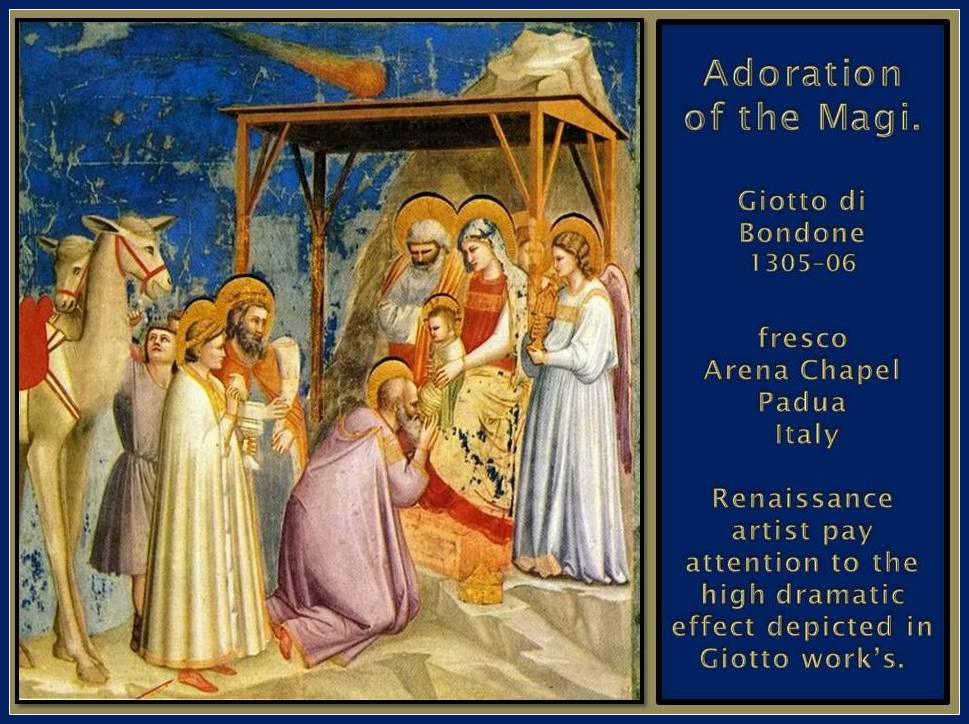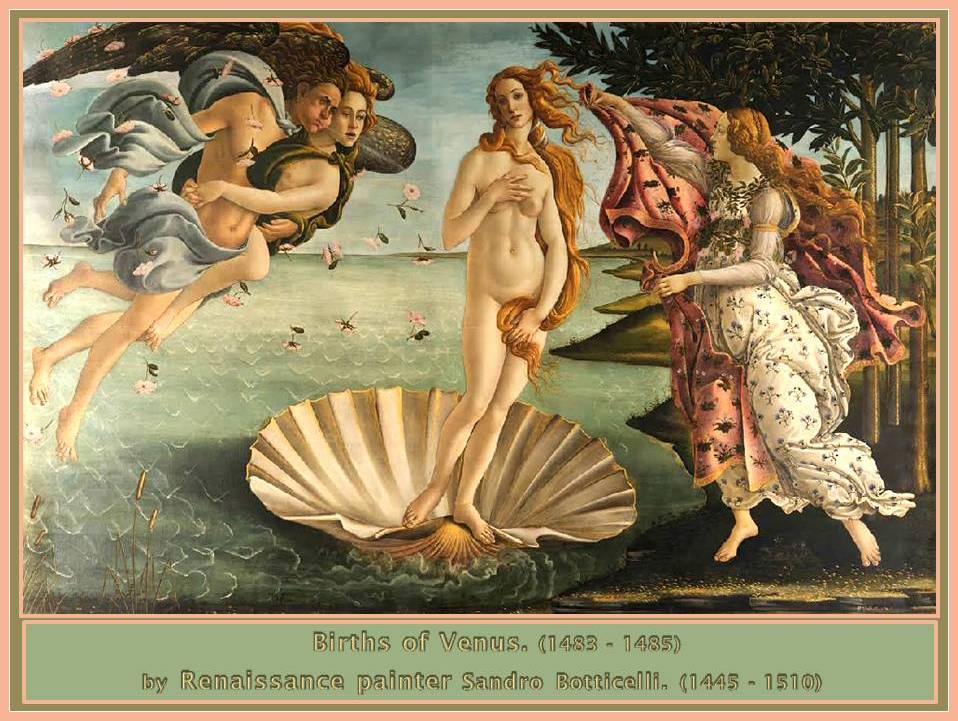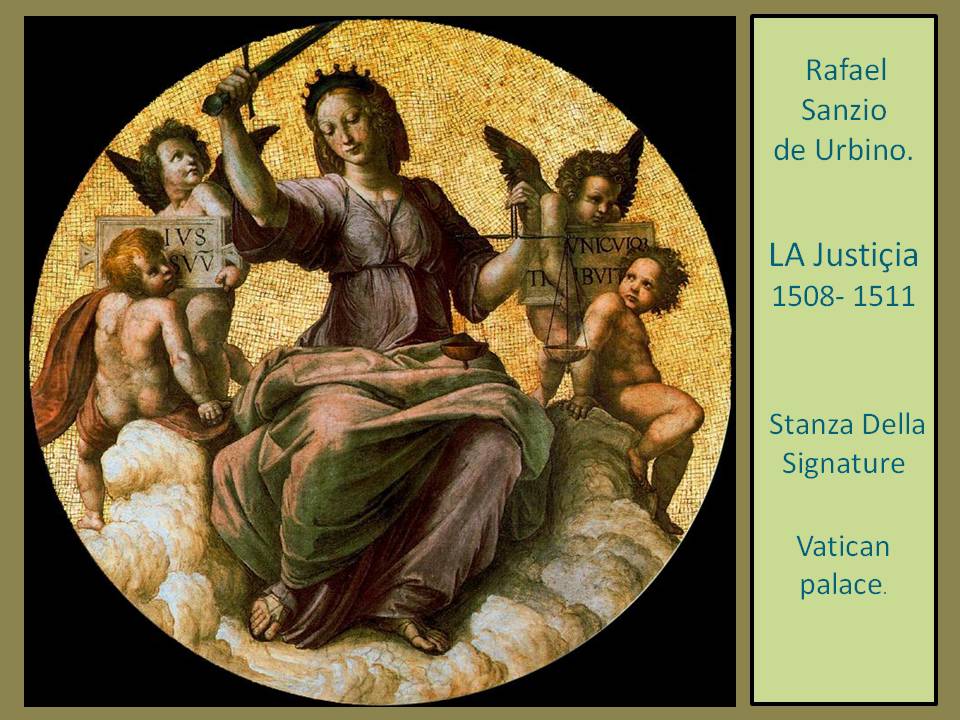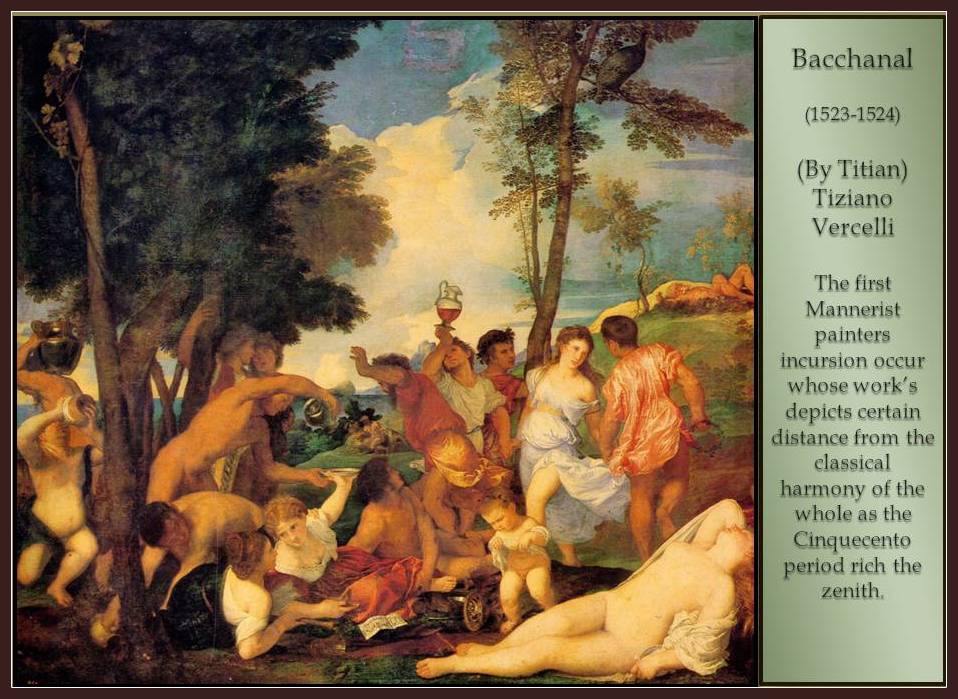Key stages of the Renaissance
-
PRE-RENACIMIENTO or TRECENTO: (13th and 14th centuries).
This period coincides with the European Gothic period.
This period is considered as (Early Renaissance).
-
QUATTROCENTO: (until the end of the 15th century).
Its cultural centre is the city. Considered as the (High Renaissance)
-
CINQUECENTO: (fills all the 16th century).
Its head is Rome. (Considered as the Late Renaissance) in which develop as well the Mannerism at the second half during this period.
Pre – Renaissance or Trecento: 13- 14 centuries of our era.
XIII y XIV (A.C)
This early period in which emerge the Renaissance is known as Pre-Renaissance or Trecento and although in Europe; still remains in preference the Gothic and Byzantine art, in Italy these strictly framed artistic conceptions based exclusively in religious ceremony and thematic don’t resonate with them, therefore the illustrated Italian men’s were not willing to give up its efforts to restore the old classic concept of beauty. The one that belonged to their ancestors and they feel so proud about it and also revere so intensely, even more, since they could learn about the ancient classic period in manuscript uncovered in secrets rooms at old churches. Those were translated to Latin during the 13 and 14 centuries helping to better understand the art of the pass, as well from the discover of ancient Roman’s and Greek ruins containing awesome sculptures.
In relation to arts can be seen in Italy the application of certain basic understanding and trends that some artists during the Gothic period had already appointed. Those concepts work well with the new changes they wanted to implement in this new period. So they took from formidable painters like Giotto Di Bondone and latter also from Rogier Van Der Weyden; the high expressions of drama. From some other painters they took as well advance artistic theory exponents; as Jean Van Eyck conceptualization of painting through clues and hidden messages.
The still strong artisan formation of painters, architects and sculptures during the Trecento, limit somehow their work to flash towards a rapid change. It took a while so they openly and definitely could break with the preconceived Gothic aesthetic bases, but also influenced the fact that still the church was their main client in that period and they set restricted rules that decrecreased the free artistic expressions.
The application of new technical advances was merging slowly, with the tendency to highly; little by little classic concepts of perfection and proportionality among Italian artist, resulting from this interesting mix very fine works of art which were a little more intellectualized, where the artist gradually starts to communicate more clearly its personal message and declare by the second half of this period onward their choice of style with new freedom, regardless of been representing religious subjects, portraits, landscapes, building a sculpture or a cathedral.
This new optic open the way for the humanism to set in the artist preference. In this period are laid the foundations that will unify the most important elements that conform properly the Renaissance style, these elements emerging here are perfected during the High Renaissance latter with important figures which are properly recognized as artists, and not like merely artisan.
Quatrocento
XV (A.C)
– In this period in the 15 century is where formally begins the Renaissance in Italy and are seen more clearly the preferences to follow classic patterns in art.
– Their works have a great sense of balance and harmony.
– There is a radical transformation of art and artist and an explosion of different new themes.
– In architecture occur a radical break with the formal middle ages language characteristic and are settle the fundamental principles of the new Renaissance formulation, where the elements of the classical past as for example; the arches and the columns orders are integrating within the new formulas of construction, such as the use of plates of marble’s and the so-called coffers.
– In this period churches of centralized plant are built in greater amount although the Basilica structure is still been builder as well.
– The Church still commissioned the majority of works of art by which the Quatrocento architecture is still contemplating among its important buildings temples of the most varied condition.
– Opening to the representation of varied decorative elements with new themes in the exterior of the building, like polychrome walls and opening of Aedicule.
– It is frequent the construction of hemispheric or ogival domes.
– The palaces are growing in importance and are fully integrated with the city.
– The sculpture seeks the representation of the canons of beauty of classical antiquity and the representation of an objective realism. The human body is represented with greater realism.
– It’s Reborn the sense of proportionality in the sculpture whose canon is set as nine and ten heads.
– The nude gets a new thematic force related on many occasions with the mythological theme in sculpture, although it’s also represented in painting.
– Thematic breadth in which nature is more realistic and detailed and there is a tendency to make imitation of sculptural models of antiquity.
– In this first period of Renaissance painting there is concern about the visual representation of nature inspired by pictorial models of classical antiquity.
– After several experiments is found the geometric or linear perspective in this period, in which mainly closed type triangular compositions are illuminated with a translucent light distributed homogeneously in the work.
– Chromatic complementarily is seeks in the paintings distributed in a balanced and harmonious colors, using several techniques and different media such as frescoes, oil paintings, temples on fixed supports or portable as tables or canvases.
Cinquecento
XVI (A.C)
– This period of high classicism is developed in the first half of the 16th century, is important for Rome and the so-called Princes Popes who have an important role in the development of the art acting as patrons, with Julio II, León X, Clement VII.
– Important artists receive commissions to decorate the Papal rooms. These include Michelangelo Buonarroti, Donato Bramante and Raphael.
– In relation to architecture the classical influence on the use of orders and construction techniques is maintained.
– Is shown greater luxury and sumptuousness in the palaces combining the practical function of the art work with the decorative purpose.
– Centralized plants in churches are used but with new architectural approaches that were based on the humanist thought.
– Among the major works in this period, can be cited the new Vatican Palace, the works of the architect Bramante and architect Palladio village’s.
– Painters are also innovators and scientists as well, experimenting with many sources of materials, drawing styles, seeking to obtain new color and the representation of atmospheres in they work. Leonardo Da Vinci was one who highly in this scientific experimental work in art.
– By half of the Cinquecento period toward its zenith are conformed gradually the bases of the Mannerisms’ Movement.
– Balance and harmony are maintained in the realization of many sculptures but there was some trepidation and dynamism in forms and expressions which the sculptures of Michelangelo Buonarroti are an example.
– In painting although much of them remain balanced and harmonious with the works of Rafael compositions for example, revolutionary contributions are introduced like the esfumato technique and the aerial perspective by Leonardo da Vinci.
– The first Mannerist painters incursion occur such as Raphael, Titian and Giorgione whose work’s depicts certain distance from the classical harmony of the whole as the period rich the zenith.
– An anti classic answer to classicism dogmas occurred in the second half of the 16th century with the Mannerism movement, which are the preamble of the future Baroque style.
– The art begins to lean at the end of the 16th century towards tension against the classical balance, spatial confinement and stress against the extensiveness of the space, contrasted against the homogenous light, intense chromatic against the smooth application of color. Their works get huge in volume, looking like giants against the former gracility and perfect dimensionality in the past.
– High expressiveness of emotions is shows against the schematic idealism. But above all is appreciated the increase feeling of restlessness and anxiety contrary to the usual classical calm atmosphere and order. Al this agitated expression and distances to the classical proportions pave the way to the incoming period in art.
After analyzing the emergence, evolution and consolidation of this innovative movement in Art can be appreciated how important and ground-breaking was in the development not only of the man’s artistic creations, but also how revolutionary and transcendent was in the development of human history in general. The studies about the Key stages of the Renaissance help us to understand the radical changes their trigger, which set in motion the progress of a new modern era with open mind. An era in with men does dare to situate the human figure as center of the universal whole instead of revolve exclusively around a god.
In the next post will be address in more detail the three fundamental periods of the Renaissance in Art:
-
Early Renaissance.
-
High Renaissance.
-
Late Renaissance.
Link to this post!








